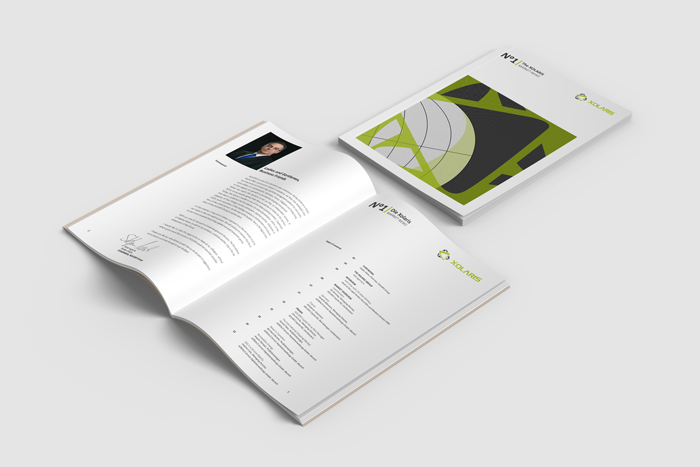XOLARIS Group2023-03-08T10:05:35+00:00
XOLARIS Capital AG as Risk Manager
AIFMs are faced by a lot of regulatory changes in respect of risk management. Lates development was the introduction of ESG criteria as a new risk factor. which leads to significant changes in the whole set-up of an organization and in daily operations.
This, in itself, will frequently be challenging for existing fund managers, since established processes and structures will have to be pried open and replaced by new models. Apart from that, finding appropriate personnel to oversee and perform risk management tasks may prove difficult since the job profile in its required form was not prevalent in the market until now.
In order to operate risk management as required by the AIFMD, AIFMs have to implement the respective risk management systems. These comprise a risk management policy as well as measurement and management tools. The AIFMD and its delegated regulation (Level 2) oblige an AIFM to identify, document, measure and monitor all risks that are relevant for each of its AIFs with adequate frequency. Risks that have to be monitored generally include market, credit, liquidity, counterparty and operational risks.
[rml_read_more]To set up an effective risk-management framework for its AIFs, an AIFM has to understand the meaning and implications of the respective risks for each individual AIF. As an example, market risk for a RE fund may be defined along the lines of investment market and micro-location developments, whereas for a PE fund investing in companies producing goods it may rather relate to developments within target customer groups or competitor movements.
Based on this understanding of risk in the specific context of the AIF, the AIFM should elaborate a meaningful and distinct definition for each of the identified risk categories. This definition can then be used to identify indicators that allow measuring of the respective risk.
When identifying relevant risks, AIFMs should consider the level at which the risk arises. Some risks will arise at the level of the AIF, but others will arise at the level of the AIFM, or at the level of the asset itself.
For a risk-management framework to be accurate and effective, it is important that risks are addressed and monitored at the level of their origin. This should also be reflected when determining indicators for the identified risks. Indicators should be meaningful in the way that they properly measure the relevant risk component at the respective level. The number of indicators used should be limited but should allow capturing the risk and may depend on the risk’s priority. The priority of a risk for an AIF should be determined based on its potential impact and the probability of that risk materialising for the AIF.
Level 2 requires AIFMs to define limits for the identified risks, which are in line with the risk profile of the AIF. At this, the regulation states a clear preference for quantitative measurement. The use of qualitative limits, where considered more appropriate, should thus be justified with objective reasons.
Risk limits, especially when quantitative, should allow for regular fluctuations of the respective parameter but reliably detect irregularities. In order to ensure efficient detection and to be able to take proactive action, especially for high priority risks, AIFMs may consider setting risk limits for early warning and for immediate mitigation. Once set up, the risk management function will have to address and interact with various areas and functions covered by the AIFMD. Accordingly, AIFMs should carefully consider how they want to integrate risk management into their overall organisation. Processes for the coordination with adjacent areas, such as liquidity management, leverage, valuation and reporting need to be established and implemented.
Especially for liquidity management, AIFMs need to decide on where the respective tasks shall be performed. Liquidity stress-testing, for example, could either be performed directly by risk management or by portfolio management, with risk management validating the applied parameters, models and scenarios. In addition, sufficient thought should be given to what appropriate stress-testing means for the respective AIF and at which levels within the structure liquidity risks arise. As an example, a closed-ended PE fund investing in a single company is likely to require less extensive and sophisticated stress-testing than an open-ended RE fund investing in a large, internationally diversified portfolio including various property types at different stages in their lifecycle. Also, when stressing the liquidity of an AIF, to the extent feasible based on available data, scenarios used should be comprehensive and should take into account knock-on and feedback effects throughout the entire structure, starting from the asset level.
Overall, requirements on and implications of establishing AIFMD-compliant risk management are manifold and complex. Applicant AIFMs are thus advised to reflect on their business model and intended organisational structure before setting up the function and framework. AIFMs should spend thorough thought on the composition of their senior management and board, including the allocation of responsibilities for the oversight of operational and control functions, and the extent to which they might benefit from the proportionality principle. In addition, AIFMs may consider outsourcing part or all of the risk management operations. With this regard, several options, including the outsourcing of more ‘mechanical’ tasks, such as data collection and report writing are currently discussed within the alternative investment industry.
Especially for liquidity management, AIFMs need to decide on where the respective tasks shall be performed. Liquidity stress-testing, for example, could either be performed directly by risk management or by portfolio management, with risk management validating the applied parameters, models, and scenarios. In addition, sufficient thought should be given to what appropriate stress-testing means for the respective AIF and at which levels within the structure liquidity risks arise. As an example, a closed-ended PE fund investing in a single company is likely to require less extensive and sophisticated stress-testing than an open-ended RE fund investing in a large, internationally diversified portfolio including various property types at different stages in their lifecycle. Also, when stressing the liquidity of an AIF, to the extent feasible based on available data, scenarios used should be comprehensive and should take into account knock-on and feedback effects throughout the entire structure, starting from the asset level.
Overall, requirements on and implications of establishing AIFMD-compliant risk management are manifold and complex. Applicant AIFMs are thus advised to reflect on their business model and intended organizational structure before setting up the function and framework. AIFMs should spend thorough thought on the composition of their senior management and board, including the allocation of responsibilities for the oversight of operational and control functions, and the extent to which they might benefit from the proportionality principle. In addition, AIFMs may consider outsourcing part or all of the risk management operations. With this regard, several options, including the outsourcing of more ‘mechanical’ tasks, such as data collection and report writing are currently discussed within the alternative investment industry.
XOLARIS is now in its eleventh year of existence. Having started as a classic back-office outsourcer based in Constance, we have now developed into an international structuring and fund management platform for real assets, with offices in Liechtenstein, Germany, France, Singapore and Hong Kong.
In this regard, our growth is consistently breaking new ground.
When we made the decision to set up KVG, an independent service, in 2014, many people agreed that there would be no market for this service.
Today, the ManCo market is one of the fastest growing markets. Expansion into Asia in 2018 laid the foundations for internationalisation, which, in the capacity of first foreign market participant, reached another milestone in 2020, with relocation of the holding company to Liechtenstein and acquisition of the AIFM licence. As the next AIFM location, Paris is the logical next step of the XOLARIS Group’s success story.
In this context, it was and is always important to us that we remain true to our roots in the real asset business. We will continue to maintain this focus as we move towards becoming a global real asset investment group.
With our new CI, we want to break new ground in this area. The first edition of Market News as well as our podcasts, constitute another step in the development of the Group.
I would like to take this opportunity to thank all my colleagues, without whose great work the success of XOLARIS would not have been possible.
I hope you like our new format as well. Even so, we are open to suggestions and criticism and look forward to your feedback.



